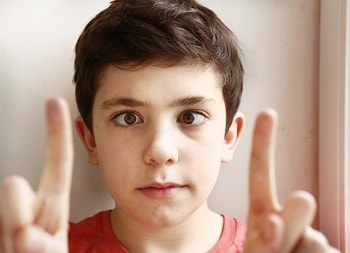AMBLYOPIA OR LAZY EYE
It is a type of functional abnormality of visual system in which one or both eyeballs are affected.
Vision does not improve beyond a certain limit and no physical abnormality of ocular media or visual pathway can be blamed for poor vision.
Types of Amblyopia: It is of three types:
1. Stimulus deprivation amblyopia:
If a child has congenital cataract, corneal opacity or any other opacity in the media so that the rays of light do not pass and focus on retina, the child will develop amblyopia.
2. Strabismic amblyopia:
If a child has squint or strabismus, one eye
dominates over the other causing suppression, which consequently becomes amblyopic.
3. Anisometropic amblyopia:
If a child has anisometropia, i.e. one eye is emmetropic and other eye is high hypermetropic as in unilateral aphakia, one eye develops amblyopia.
Treatment of Amblyopia
1. Correction of refractive error:
Correct the refractive error either by spectacles or contact lenses at the earliest possible.
2. Occlusion therapy:
Close the normal eye and patient is made to
see with amblyopic eye. Duration of closure depends upon age of patient. It may be 5:1 or 4:1, i.e. normal eye is closed for five days
and on sixth day amblyopic eye is closed so that the normal eye also gets chance to see and it may not become amblyopic.
This occlusion is continued for minimum of three months or longer till the eye shows improvement.
3. Pleoptics:
It is a term introduced by Bangerter to include all types of treatment for amblyopia particularly that associated with eccentric fixation. This includes exercises like CAM stimulator and synoptophore exercises.
OPTOMETRY-SHARP VISION
Optometrist

